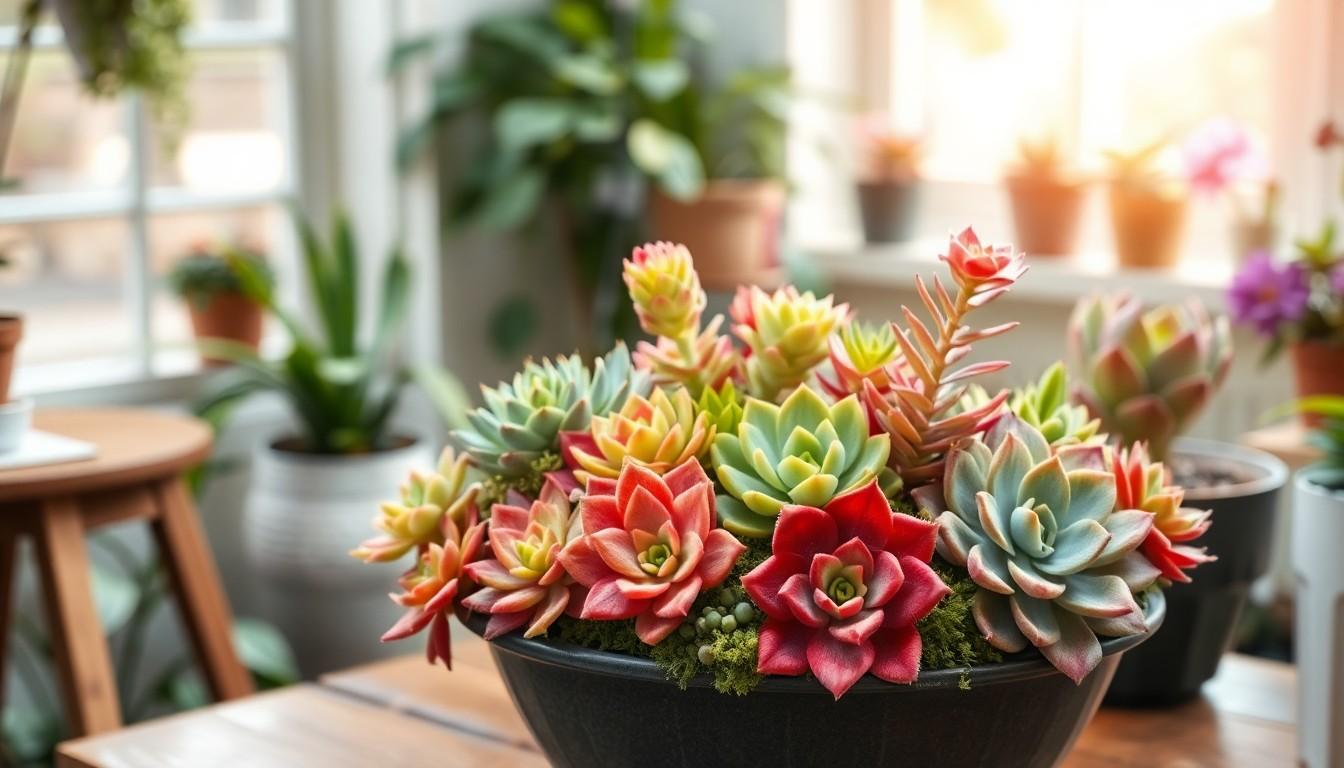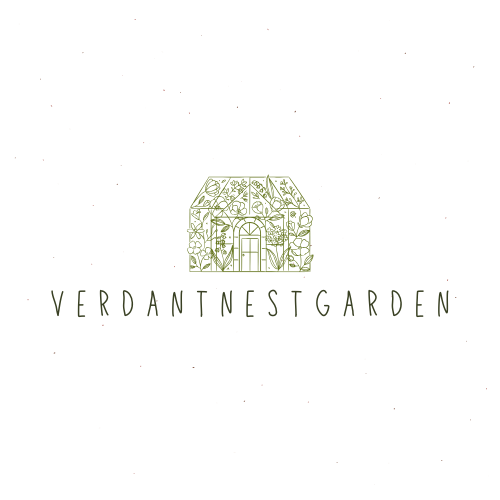Rosette succulents are the ultimate plant divas of the succulent world. With their stunning, symmetrical shapes and vibrant colors, they’re like the supermodels of the garden, demanding attention and admiration. If you’ve ever wanted to add a touch of elegance to your home without the fuss of high-maintenance plants, these beauties are the answer.
What Are Rosette Succulents?
Rosette succulents define a unique group of plants known for their circular, rosette-shaped formations. These arrangements consist of overlapping leaves that create an attractive symmetrical appearance. Succulent types like Echeveria, Aeonium, and Sempervivum exemplify rosette structure and display a variety of colors, including shades of green, blue, red, and purple.
Characterized by thick, fleshy leaves, rosette succulents store water efficiently, enabling survival in arid environments. Their compact growth habit makes them suitable for various settings, from indoor decor to outdoor gardens. Many species thrive under bright, indirect sunlight, while some tolerate partial shade.
Growing rosette succulents proves easy, requiring minimal care. Soil that drains well proves essential, with a cactus or succulent potting mix ideal for healthy growth. Watering should occur when the soil dries out completely, reducing the risk of root rot.
Propagation methods for rosette succulents include offsets, leaves, and cuttings. Offsets, or small plants emerging from the base, can be carefully detached and replanted. Leaf propagation often yields new plants when leaves are laid on soil, provided adequate care. Cuttings allow growers to snip a healthy stem and root it in soil.
These plants thrive in diverse settings, offering versatility for collectors and decorators alike. Their striking appearances and easy care make rosette succulents a popular choice among gardening enthusiasts.
Popular Types of Rosette Succulents

Various rosette succulents stand out for their unique beauty and ease of care. Among these, Echeveria, Aeonium, and Graptoveria are highly regarded.
Echeveria
Echeveria features a stunning array of colors and forms, often displaying rosettes comprised of thick, fleshy leaves. These succulents thrive in bright, indirect sunlight, making them perfect for indoor settings. Many species produce beautiful flowers, adding an extra layer of visual interest. Temperature tolerance varies, but most Echeveria prefer warmer conditions, ideally between 60°F and 80°F. They also exhibit drought resistance, needing watering only when the soil dries completely. Gardeners appreciate their wide range of hybrids available, ensuring enthusiasts find a variety that suits their tastes.
Aeonium
Aeonium showcases a distinct growth habit with its tall, branching stems and rosettes at the tips. This succulent variety thrives in bright locations, although it can adapt to partial shade. Many Aeonium types boast vibrant colors, including deep greens and striking reds. Growth typically occurs during the cooler months, while they enter dormancy in summer. Watering should be moderate, without allowing the roots to sit in moisture. Their unique structure and lively appearance make Aeonium a popular choice among succulent collectors.
Graptoveria
Graptoveria combines traits of both Echeveria and Graptopetalum, resulting in visually appealing rosettes. This hybrid often displays an array of hues, ranging from blues and greens to pinks and purples. These succulents thrive in bright light but can tolerate some shade, making them versatile for different environments. Growth occurs throughout the year, but they flourish during warmer seasons. Watering should follow a thorough drying period to prevent root rot. Collectors value Graptoveria for its unique aesthetic and adaptability, adding charm to various garden arrangements.
Care Tips for Rosette Succulents
Proper care is essential for maintaining the beauty of rosette succulents. Attention to watering, soil requirements, and light conditions ensures vibrant growth and overall health.
Watering
Watering should occur when the top inch of soil feels dry. This method prevents overwatering, a common mistake that leads to root rot. During the growing season, typically spring and summer, succulents appreciate more frequent watering. Reduced water during the dormant winter months allows plants to rest. Always check the drainage to avoid standing water in pots. A thorough soak encourages root development, enhancing overall resilience.
Soil Requirements
Well-draining soil is crucial for rosette succulents. A cactus or succulent potting mix suits their needs perfectly. Soil enriched with perlite or sand improves aeration and drainage. Excess moisture retention can lead to fungal issues. A pot with drainage holes also aids in preventing water accumulation, ensuring root systems thrive. This combination of soil and drainage enables robust growth and vibrant health.
Light Conditions
Bright, indirect sunlight promotes the best growth for rosette succulents. Direct sunlight can scorch their delicate leaves, so a balance is essential. Morning sun is gentle and beneficial, while afternoon sun becomes harsher. Some species tolerate partial shade, adapting well to indoor environments. Consistent light exposure maintains color and shape, supporting their striking appearances. Regularly rotating plants helps distribute light evenly, contributing to optimal health.
Benefits of Growing Rosette Succulents
Growing rosette succulents offers numerous advantages that appeal to plant enthusiasts. Their aesthetic value stands out, enhancing both indoor and outdoor spaces with unique shapes and vibrant colors. Easy maintenance contributes to their popularity; minimal watering and care requirements suit busy lifestyles and beginning gardeners.
Low water consumption highlights another benefit. These plants store moisture in their fleshy leaves, thriving in arid conditions without excessive irrigation. Their drought-resistant nature reduces the frequency of watering, making them a practical choice for individuals in dry climates.
Adaptability plays a significant role in their appeal. Rosette succulents thrive in various light conditions, from bright, indirect sunlight to partial shade, accommodating diverse environments. This versatility allows for placement in multiple settings, such as homes, offices, and gardens.
Propagating rosette succulents adds another layer of attraction. Methods such as offsets, leaves, and cuttings facilitate easy expansion of collections. Enthusiasts can create new plants without difficulties, making shares among friends even more enjoyable.
Health benefits also accompany these plants. Studies indicate that indoor greenery can improve air quality and promote a sense of well-being. Rosette succulents serve both decorative and functional purposes, contributing positively to living spaces.
Finally, their compact growth habit ensures they fit in limited spaces. Whether displayed on shelves or in small pots, they bring life to various settings without overwhelming the area. Overall, the benefits of growing rosette succulents make them an excellent choice for anyone seeking beautiful and low-maintenance plants.
Common Pests and Problems
Rosette succulents can face several pests and problems that affect their health and appearance. Aphids, for instance, tend to cluster on new growth, sucking sap and causing leaf distortion. Mealybugs appear as white, cotton-like masses on the leaves and stems, weakening the plant and leading to potential rot.
Spider mites often thrive in dry conditions, leading to stippling on leaves and eventually causing them to drop. Regular inspection of succulents can help detect these pests early.
Overwatering typically leads to root rot, which manifests as yellowing leaves and mushy stems. Poor drainage and waterlogged soil significantly increase this risk. Ensuring well-draining soil mitigates this concern effectively.
Fungal issues also pose a threat in humid environments. Powdery mildew develops as a white, powdery coating on leaves, while black spots often indicate a problem with watering practices. Maintaining proper air circulation around the plants aids in preventing fungal growth.
Sunburn occurs when rosette succulents receive too much direct sunlight, leading to scorched leaves that display brown or crispy patches. Gradual acclimatization to brighter light levels helps prevent this issue.
Root-bound conditions can affect overall growth and health if plants remain in the same pot for too long. To alleviate this, repotting into a larger container provides more room for root expansion. Regular monitoring and appropriate care ensure rosette succulents thrive and remain beautiful.
Conclusion
Rosette succulents bring a unique charm to any space with their stunning forms and vibrant colors. Their low-maintenance nature makes them perfect for both novice and experienced plant lovers. With proper care and attention to their needs, these succulents can thrive and enhance the beauty of homes and gardens alike.
Whether it’s the colorful Echeveria or the elegant Aeonium, each type offers something special. Their ability to adapt to various conditions while requiring minimal water makes them an eco-friendly choice. By embracing rosette succulents, individuals can enjoy the benefits of indoor greenery while adding a touch of elegance to their environments.

